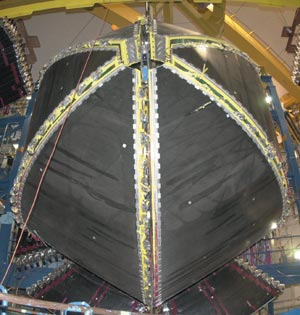Richard Taylor, the Canadian particle physicist who shared the 1990 Nobel Prize for Physics, has died at the age of 88. Taylor spent most of his professional life at Stanford University and the nearby SLAC National Accelerator Laboratory in California, where he did pioneering experiments that provided the first experimental evidence that protons and neutrons are made of quarks.![]()
Taylor was born in 1929 in Medicine Hat, Alberta and decided to pursue physics after the atomic bomb blasts at the end of the Second World War. He described himself as “not an outstanding student”, and did not graduate from high school. However, a teacher managed to get him into the University of Alberta based on his ability to do mathematics and science.
After doing bachelor’s and master’s degrees at Alberta, Taylor went to Stanford in 1952 where he began work on a PhD that involved an experimental study of pion production. In 1958 he took a break from his dissertation and spend three years in France, helping to build the Laboratoire de l’Accélérateur Linéaire at Orsay. He then worked briefly at the Lawrence Radiation Lab in California before returning to Stanford in 1962 to work on the nascent Stanford Linear Accelerator (SLAC) and complete his PhD.

Quarks, diquarks and pentaquarks
Taylor bagged his Nobel prize along with Jerome Friedman and Henry Kendall – who were both at the Massachusetts Institute of Technology. In the late 1960s and early 1970s the trio was at the forefront of an experiment at SLAC that involved firing high-energy electrons at protons and neutrons. They found that electrons underwent much more “deep inelastic scattering” than was expected. This involved the electrons giving up large amounts of energy to the proton or neutron and undergoing large deflections from their original trajectories.
This unexpected observation was the first experimental evidence that protons and neutrons were made of three particles called quarks – a concept that was introduced in 1964 by Murray Gell-Mann and George Zweig.
 Kontakt
Kontakt Intranet
Intranet EN
EN


